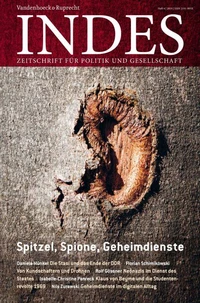Loyalitätsfragen. Glaubensgemeinschaften der täuferischen Tradition in den staatlichen Neugründungsphasen des 20. Jahrhunderts
Par :Formats :
Disponible dans votre compte client Decitre ou Furet du Nord dès validation de votre commande. Le format PDF est :
- Compatible avec une lecture sur My Vivlio (smartphone, tablette, ordinateur)
- Compatible avec une lecture sur liseuses Vivlio
- Pour les liseuses autres que Vivlio, vous devez utiliser le logiciel Adobe Digital Edition. Non compatible avec la lecture sur les liseuses Kindle, Remarkable et Sony
 , qui est-ce ?
, qui est-ce ?Notre partenaire de plateforme de lecture numérique où vous retrouverez l'ensemble de vos ebooks gratuitement
Pour en savoir plus sur nos ebooks, consultez notre aide en ligne ici
- Nombre de pages475
- FormatPDF
- ISBN978-3-8470-1218-4
- EAN9783847012184
- Date de parution08/03/2021
- Protection num.pas de protection
- Taille7 Mo
- Infos supplémentairespdf
- ÉditeurV&R Unipress
Résumé
Für das historische Täufertum war religiöser wie gesellschaftlicher Nonkonformismus und die Konfrontation mit den Herrschenden kennzeichnend. Dieser Band zeigt, wie sich Glaubensgemeinschaften aus der »täuferischen Tradition« (Mennoniten, Baptisten, Bruderhof) und die »Obrigkeit« in den staatlichen Neugründungsphasen des 20. Jahrhunderts in Deutschland zueinander positioniert haben. Entlang spezifischer Interpretationsachsen werden freikirchliche Wahrnehmung und religiöse Deutung der jeweils neuen Staatsform untersucht, die staatlichen Freiheitserweise und Loyalitätsforderungen an die Glaubensgemeinschaften um 1919, 1933 und 1949 analysiert sowie die Einstellung zu Wehrpflicht und Eidverweigerung in längerer Perspektive betrachtet.
Since the days of the Reformation, various free Protestant churches have evolved alongside the established churches in dissociation from and conflict with mainstream society.
In the process, their members also resisted the authority of the state to the extent that it restricted the free practice of their faith. Against this background, this volume inquires into the changes and continuities in state action vis-à-vis the free churches on the one hand, and the free-church attitudes and modes of behaviour towards the state on the other. The analysis is deliberately limited to the phases of upheaval around 1918, 1933 and 1949.
These years marking changes of political system each generated their own specific set of challenges with regard to the definition and calibration of the relationship between the free churches and state authority. The study concentrates on the free churches that - in different ways - regarded and regard themselves adherents to the "Anabaptist tradition" (Mennonites, Baptists and the Hutterite Bruderhof).
In the process, their members also resisted the authority of the state to the extent that it restricted the free practice of their faith. Against this background, this volume inquires into the changes and continuities in state action vis-à-vis the free churches on the one hand, and the free-church attitudes and modes of behaviour towards the state on the other. The analysis is deliberately limited to the phases of upheaval around 1918, 1933 and 1949.
These years marking changes of political system each generated their own specific set of challenges with regard to the definition and calibration of the relationship between the free churches and state authority. The study concentrates on the free churches that - in different ways - regarded and regard themselves adherents to the "Anabaptist tradition" (Mennonites, Baptists and the Hutterite Bruderhof).
Für das historische Täufertum war religiöser wie gesellschaftlicher Nonkonformismus und die Konfrontation mit den Herrschenden kennzeichnend. Dieser Band zeigt, wie sich Glaubensgemeinschaften aus der »täuferischen Tradition« (Mennoniten, Baptisten, Bruderhof) und die »Obrigkeit« in den staatlichen Neugründungsphasen des 20. Jahrhunderts in Deutschland zueinander positioniert haben. Entlang spezifischer Interpretationsachsen werden freikirchliche Wahrnehmung und religiöse Deutung der jeweils neuen Staatsform untersucht, die staatlichen Freiheitserweise und Loyalitätsforderungen an die Glaubensgemeinschaften um 1919, 1933 und 1949 analysiert sowie die Einstellung zu Wehrpflicht und Eidverweigerung in längerer Perspektive betrachtet.
Since the days of the Reformation, various free Protestant churches have evolved alongside the established churches in dissociation from and conflict with mainstream society.
In the process, their members also resisted the authority of the state to the extent that it restricted the free practice of their faith. Against this background, this volume inquires into the changes and continuities in state action vis-à-vis the free churches on the one hand, and the free-church attitudes and modes of behaviour towards the state on the other. The analysis is deliberately limited to the phases of upheaval around 1918, 1933 and 1949.
These years marking changes of political system each generated their own specific set of challenges with regard to the definition and calibration of the relationship between the free churches and state authority. The study concentrates on the free churches that - in different ways - regarded and regard themselves adherents to the "Anabaptist tradition" (Mennonites, Baptists and the Hutterite Bruderhof).
In the process, their members also resisted the authority of the state to the extent that it restricted the free practice of their faith. Against this background, this volume inquires into the changes and continuities in state action vis-à-vis the free churches on the one hand, and the free-church attitudes and modes of behaviour towards the state on the other. The analysis is deliberately limited to the phases of upheaval around 1918, 1933 and 1949.
These years marking changes of political system each generated their own specific set of challenges with regard to the definition and calibration of the relationship between the free churches and state authority. The study concentrates on the free churches that - in different ways - regarded and regard themselves adherents to the "Anabaptist tradition" (Mennonites, Baptists and the Hutterite Bruderhof).




